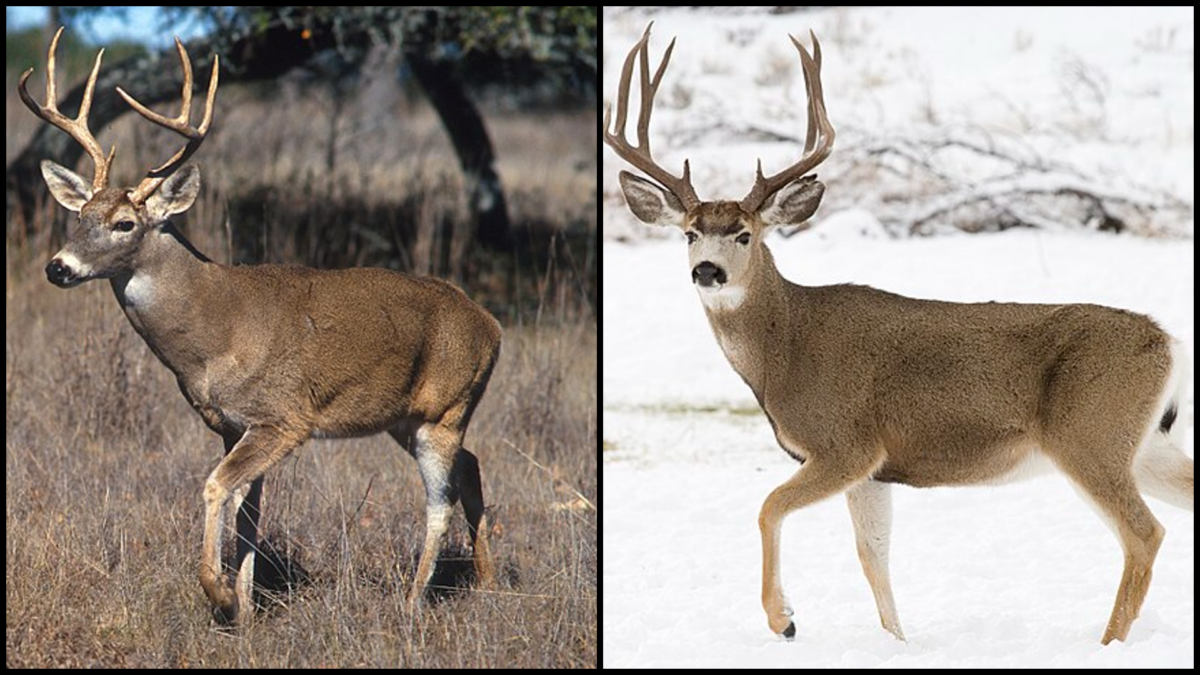
Ever found yourself squinting at a deer in the distance, wondering if it’s a whitetail vs mule deer? At first glance, they might look pretty similar, especially if you’re not used to spotting the differences. But trust me, once you know what to look for, telling these two apart becomes second nature. Whether you’re a hunter, a wildlife enthusiast, or just someone who likes to know what’s what in the great outdoors, this little guide should help you become a pro at deer identification.
Deer Hunting Coverage on AllOutdoor
The Telltale Tail: A Key Difference Between Whitetail and Mule Deer
Let’s kick things off with the most obvious giveaway: the tail. It’s like nature’s own ID badge for these deer.
Whitetail Deer Tail: Nature’s Alarm Flag
Whitetail deer didn’t get their name by accident. When these guys sense danger, they hoist that tail up like it’s the last play of the Super Bowl. The bright white underside is visible from what seems like a mile away. It’s their way of shouting, “Heads up, folks! Something’s not right!” to all their deer buddies.
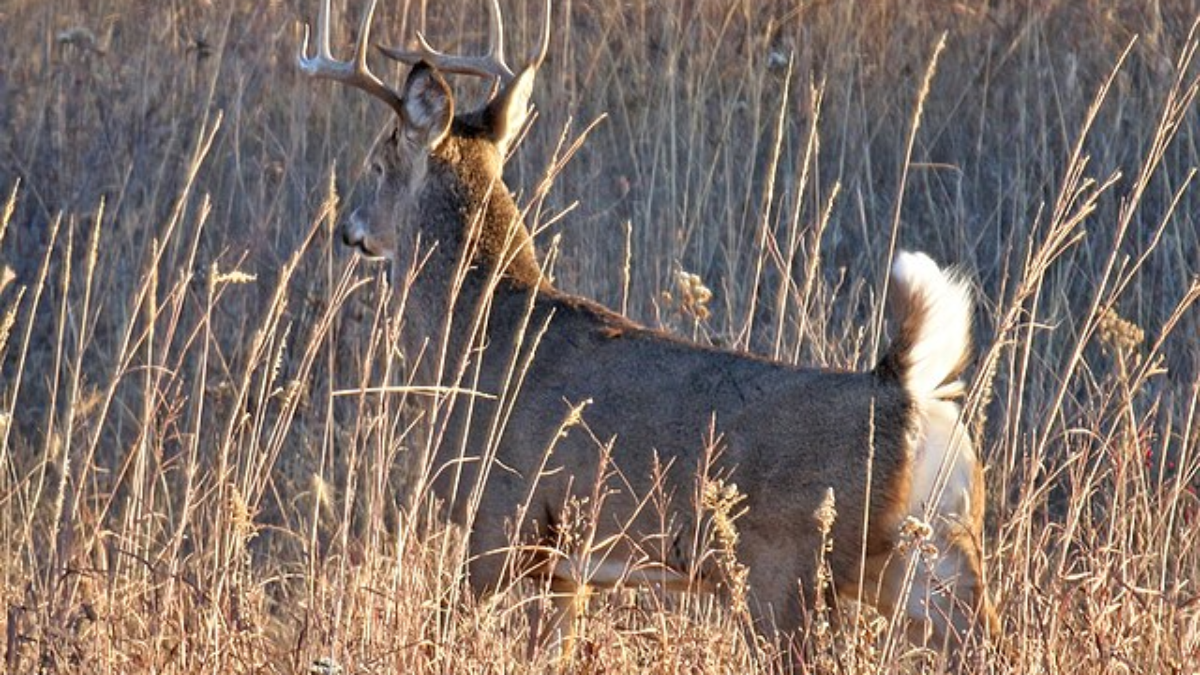

Mule Deer Tail: The Subtle Signaler
Mule deer, on the other hand, are the strong, silent types of the deer world. Their tail is more like a rope with a black tip. No dramatic flag-waving here. It’s almost like they’re trying to play it cool when danger’s around.
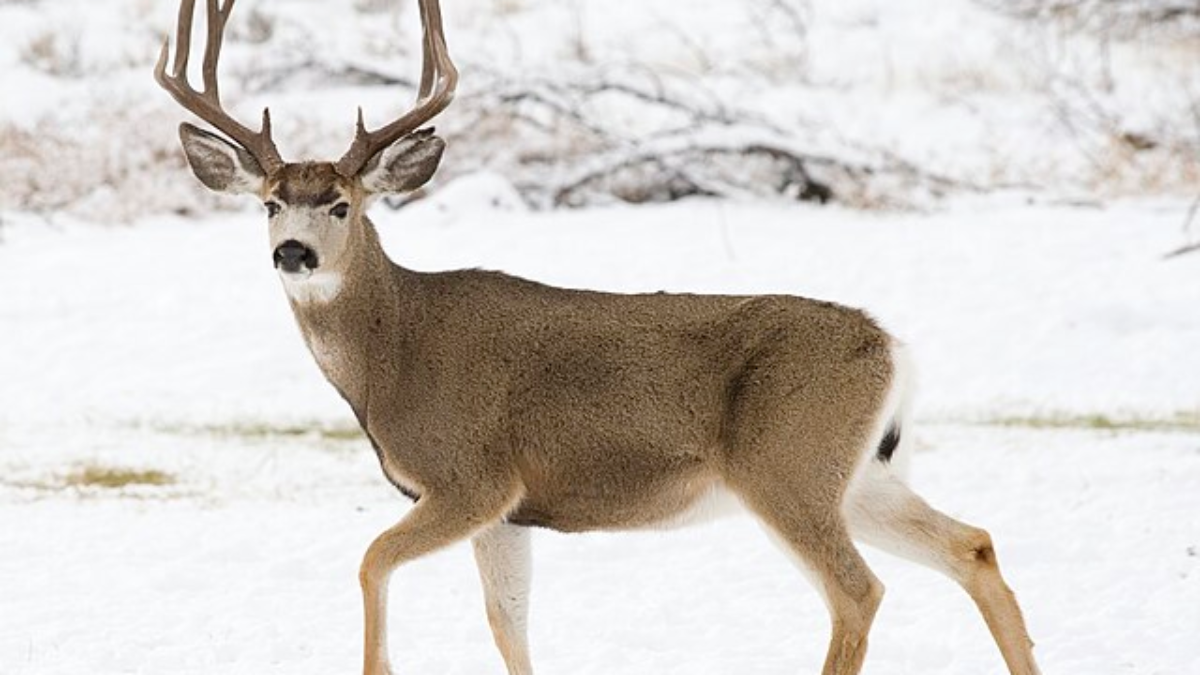

Ear Size in Deer Species: A Dead Giveaway for Identification
If you’re looking at the front end of the deer, the ears are where it’s at. This feature is a game-changer in the whitetail vs mule deer identification challenge.
Whitetail Deer Ears: Proportional and Practical
Whitetails, though, have more modest ears. They’re still alert and all, but they’re proportional to their head size. Nothing too fancy going on there.
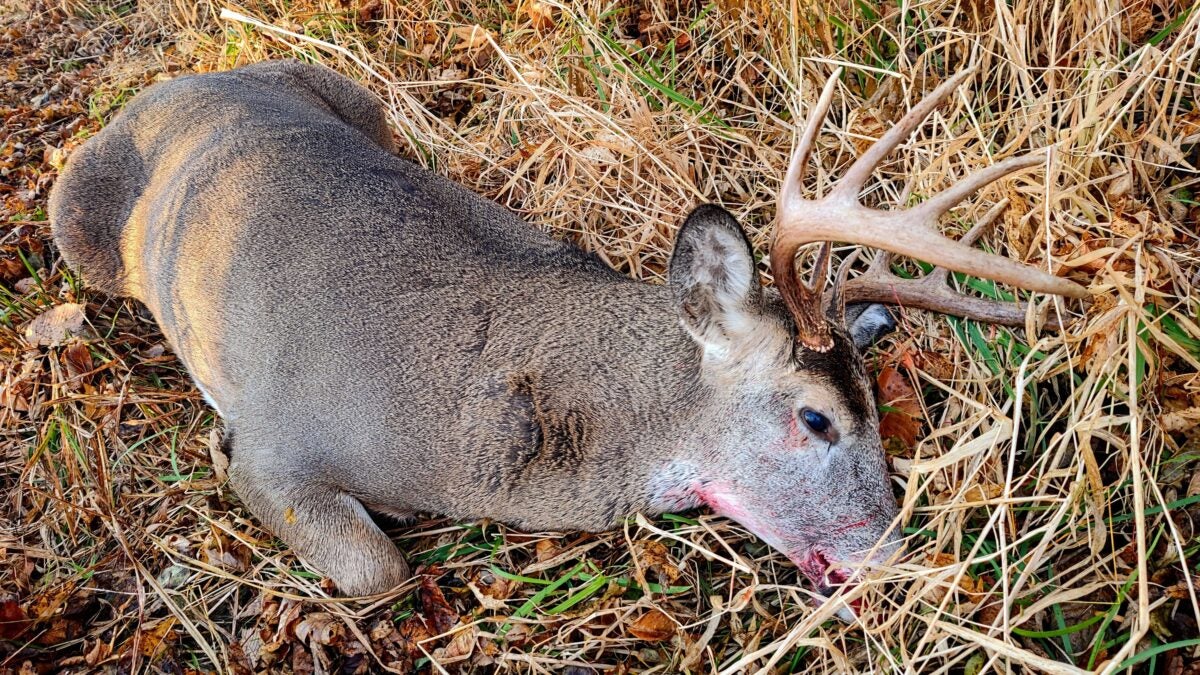

Mule Deer Ears: Nature’s Satellite Dishes
Mule deer have these enormous, well, mule-like ears. Hence the name, right? They’re like nature’s satellite dishes. I swear these guys could probably pick up radio signals if they tried.
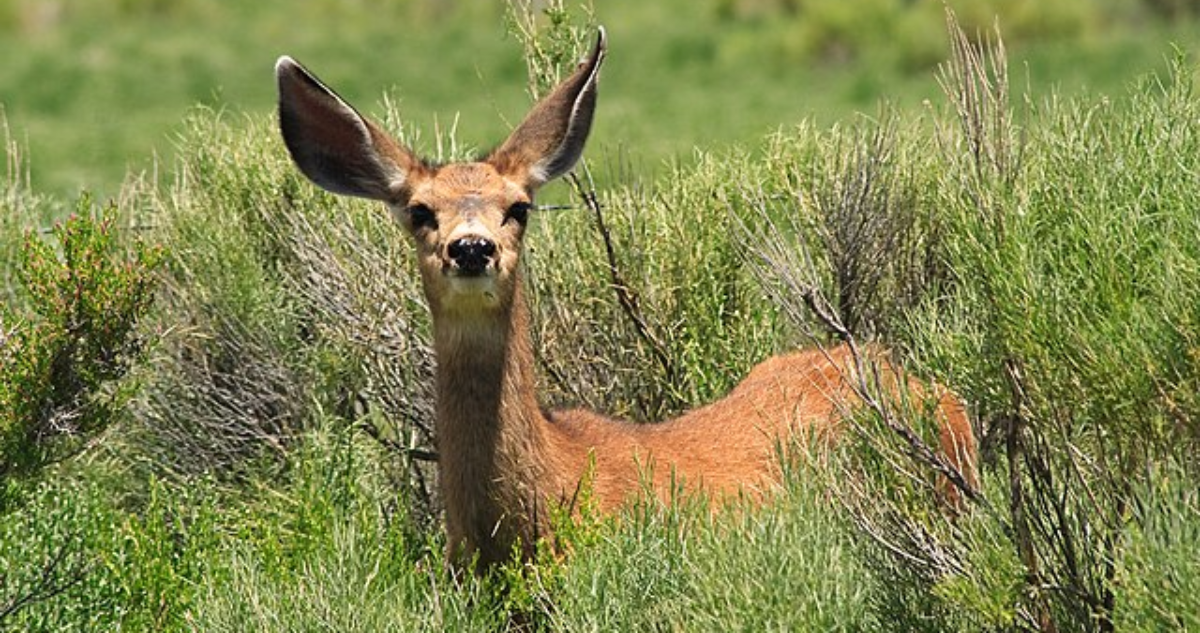

Body Type Comparison: Whitetail vs Mule Deer
When it comes to build, there’s a clear distinction between these two popular game animals.
Whitetail Deer Body: The Yoga Enthusiasts
Think of whitetails as the yoga enthusiasts of the deer world. They’re generally smaller and more delicate-looking. A big buck might hit 300 pounds, but that’s pushing it. A doe is even lighter, maxing out around 200 pounds.
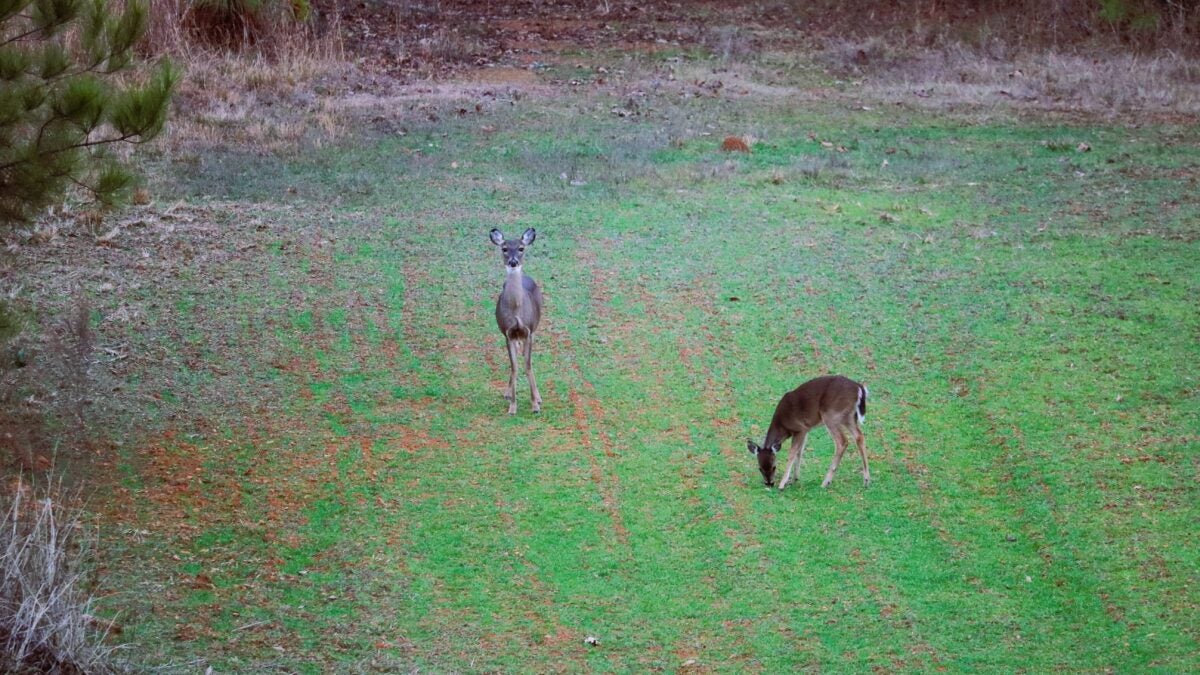

Mule Deer Body: The Gym Rats
Mule deer? These are your gym rats. They’re bulkier, more muscular. A big mule deer buck can push 400 pounds. That’s a lot of venison.
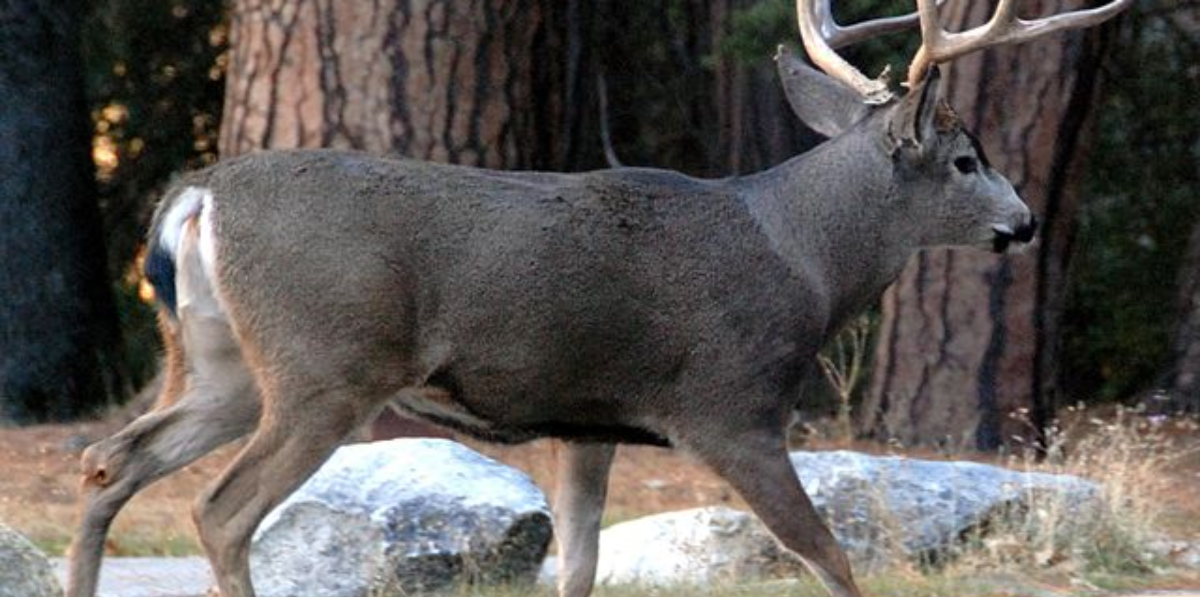

Antler Differences: Whitetail vs Mule Deer Bucks
If you’re lucky enough to spot a buck, the antlers can tell you a lot. This is crucial info for hunters and wildlife photographers alike.
Whitetail Deer Antlers: Reaching for the Sky
Whitetail antlers typically have a main beam with tines shooting straight up. It’s like they’re trying to reach for the sky.
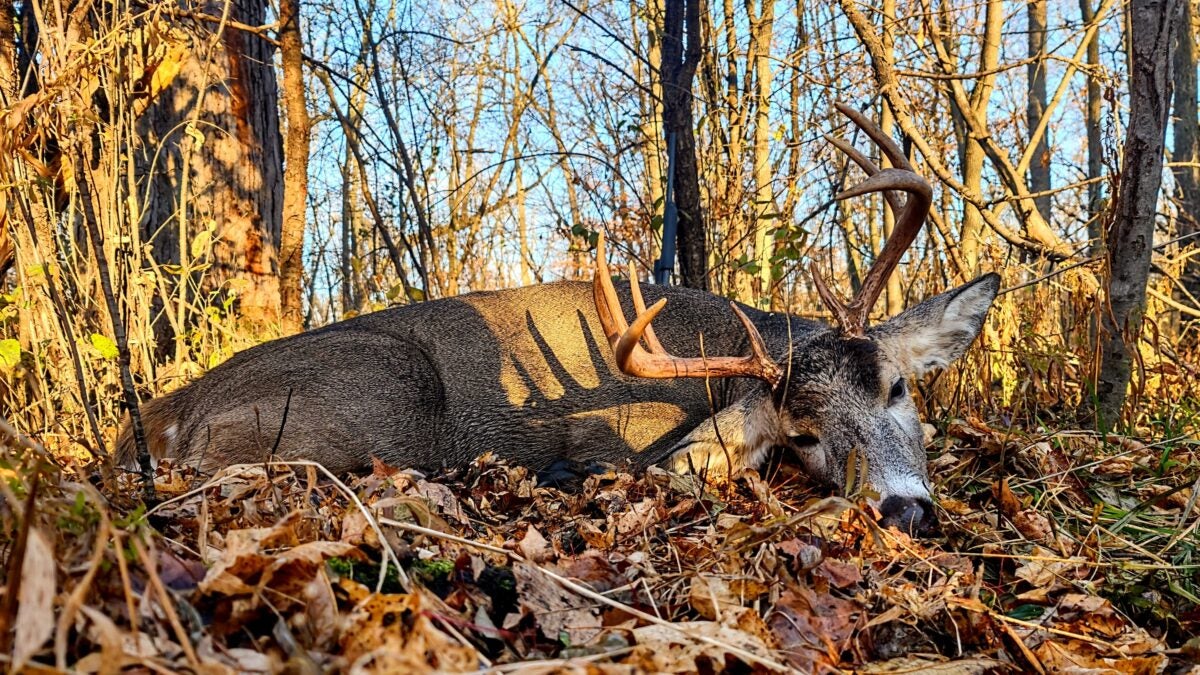

Mule Deer Antlers: The Forked Wonders
Mule deer antlers are more like they’ve been reading too many “Choose Your Own Adventure” books. They fork as they grow, creating these cool Y-shaped patterns. It’s like each point decided to bring a friend along.


Habitat Preferences: Where to Find Whitetail and Mule Deer
Where you spot these deer can give you a big clue about which species you’re dealing with. Their habitat preferences are as different as their physical characteristics.
Whitetail Deer Habitat: Adaptable Suburbanites
Whitetails are the ultimate adaptable creatures. They’re like the Swiss Army knives of the deer world, able to thrive in a variety of environments. You’ll find them in dense forests, open fields, and even suburban areas. I’ve seen them navigate through neighborhoods like they’re taking a stroll through the park.
These adaptable creatures have made themselves at home in every state in the continental U.S. From the swamps of Florida to the frigid forests of Maine, whitetails have found a way to survive and thrive. They’re particularly fond of “edge” habitats – areas where forests meet fields or croplands. This gives them the perfect mix of cover and food sources.
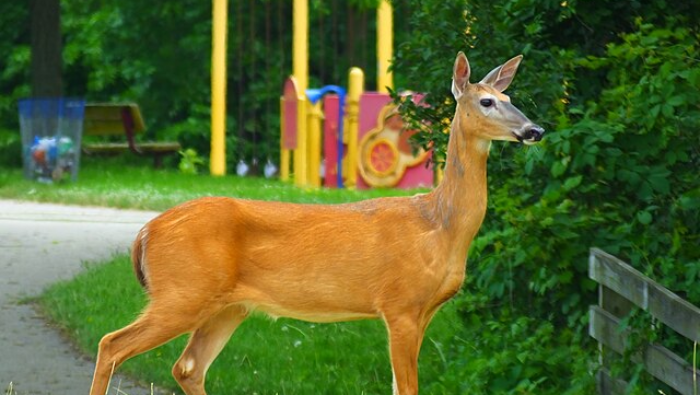

Mule Deer Habitat: Rugged Outdoorsmen
Mule deer, on the other hand, are the rugged outdoorsmen of the deer family. They prefer the more challenging terrains of the western United States and Canada. You’ll find them in the mountains, foothills, and high deserts. These areas offer them the diverse vegetation they need and the open spaces where their unique locomotion (more on that later) gives them an advantage.
Mule deer are particularly abundant in states like Colorado, Utah, and Wyoming. They’re well-adapted to arid environments and can often be found in sagebrush plains and pine forests. Unlike their whitetail cousins, mule deer tend to avoid heavily forested areas, preferring more open landscapes where they can spot predators from a distance.
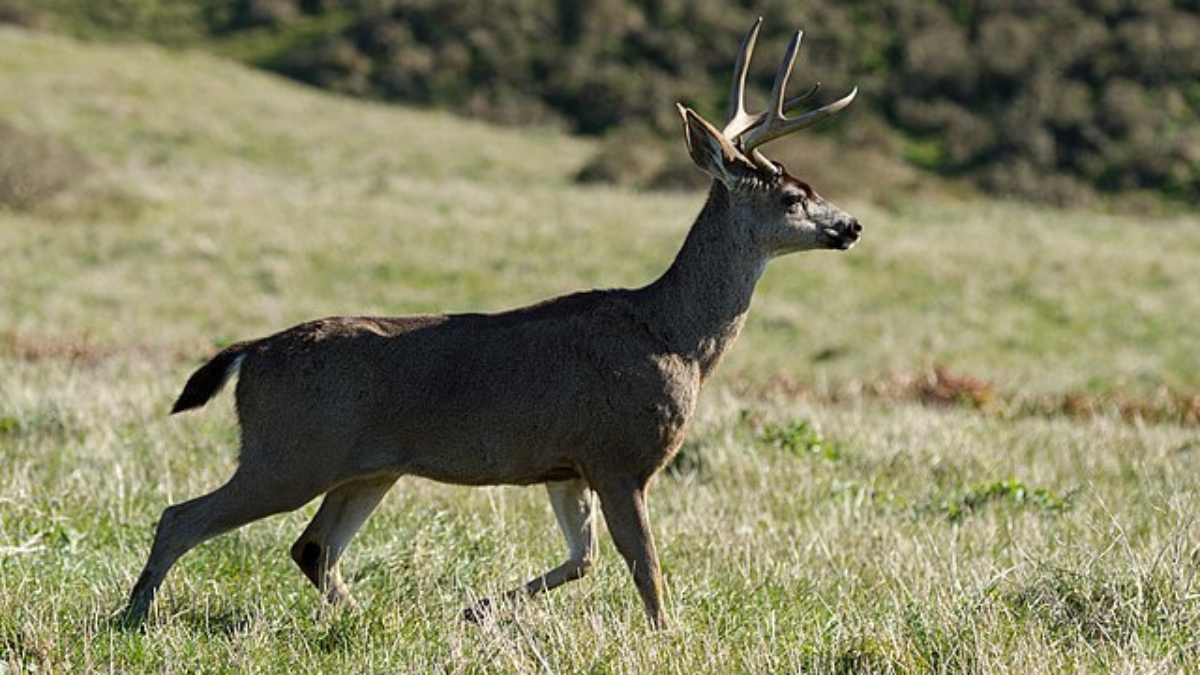

Escape Tactics: How Whitetail and Mule Deer Evade Predators
Now, this is where it gets really interesting. The way these deer move when startled is a dead giveaway of their species. It’s like they each have their own signature dance move.
Whitetail Deer Movement: The Olympic Sprinters
When a whitetail decides it’s time to skedaddle, it’s like watching an Olympic sprinter in action. They have this incredible bounding leap that can clear obstacles up to 8 feet high. I’ve seen them sail over fences. Their speed is nothing to scoff at either. A whitetail can hit speeds up to 30 mph in short bursts. That’s faster than the average speed limit in a school zone! And let’s not forget about that telltale white flag of a tail. When they’re on the move, that tail goes up, flashing white and signaling to other deer that it’s time to get a move on.
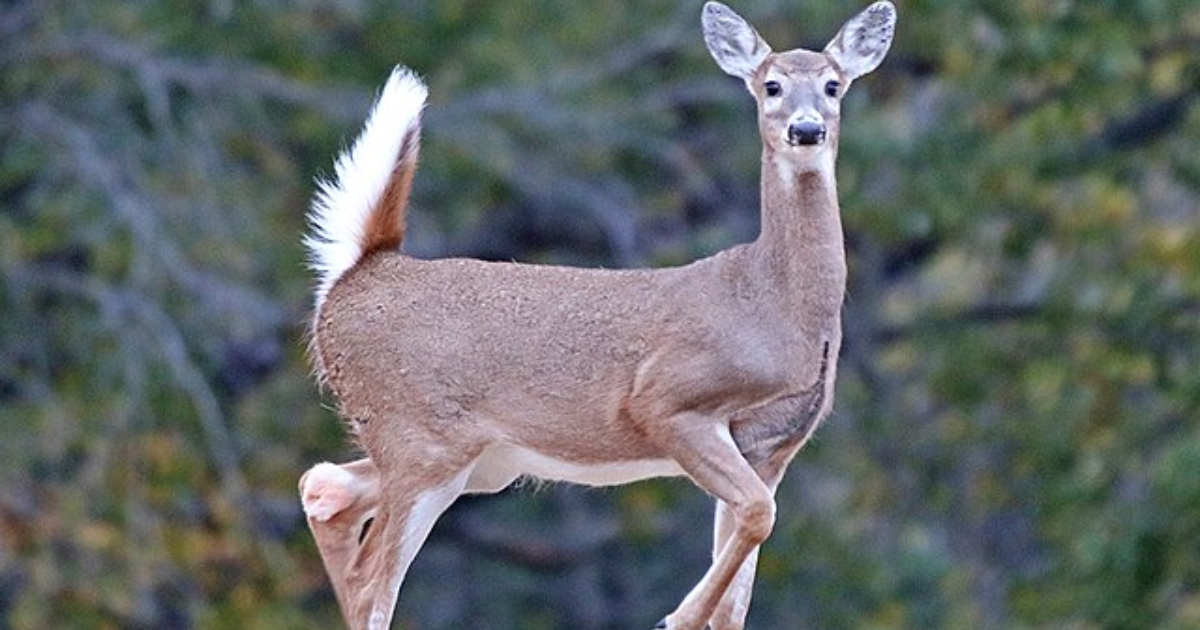

Mule Deer Movement: The Pogo Stick Pros
But mule deer? These guys have their own unique moves that’ll make you do a double-take the first time you see it. It’s called “stotting” or “pronking,” and it’s a sight to behold. Imagine a deer on a pogo stick, and you’re not far off.
When alarmed, mule deer bounce away on all four legs at once. It looks kind of goofy at first, but don’t let that fool you. This unusual gait allows them to cover rough terrain quickly and efficiently. They can change direction in mid-air, making them incredibly agile in the rocky, uneven terrain they call home. It’s not just for show either. This unique movement allows them to get a better view of potential threats as they bounce along. Plus, it’s a great way to confuse predators who might be trying to predict their path.
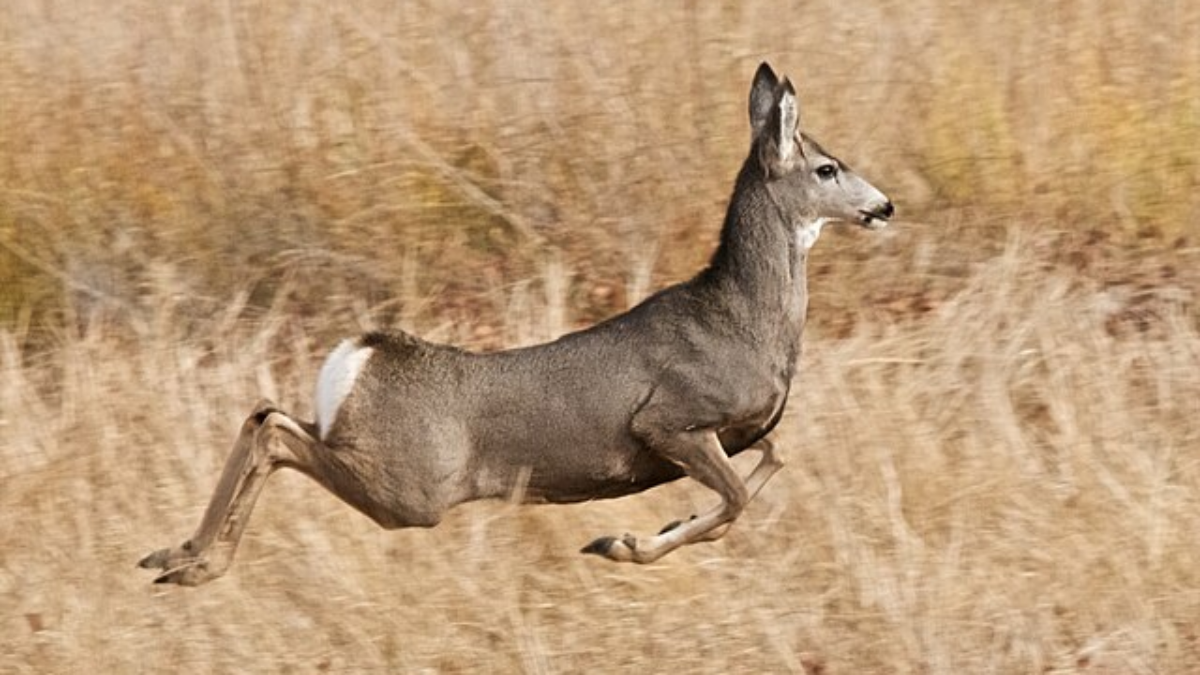

Dietary Habits: What Do Whitetail and Mule Deer Eat?
When it comes to chow time, both species have their preferences. Understanding their diets can give you insight into their behavior and habitat choices.
Whitetail Deer Diet: The Opportunistic Eaters
Whitetails are the ultimate opportunistic feeders. They’re like that friend who’s always willing to try new restaurants – they’ll eat just about anything. Their diet changes with the seasons, adapting to whatever food sources are available.
In spring and summer, they feast on fresh growth – tender shoots, leaves, and wildflowers. Come fall, they switch to more calorie-dense foods like acorns, nuts, and fruits. They’re not above raiding agricultural fields either. Corn, soybeans, and wheat are like an all-you-can-eat buffet for these guys. But here’s a fun fact: whitetails are known to eat over 600 different plant species! Talk about a diverse palate. They’ll even nibble on mushrooms and occasionally snack on insects or bird eggs if the opportunity presents itself.
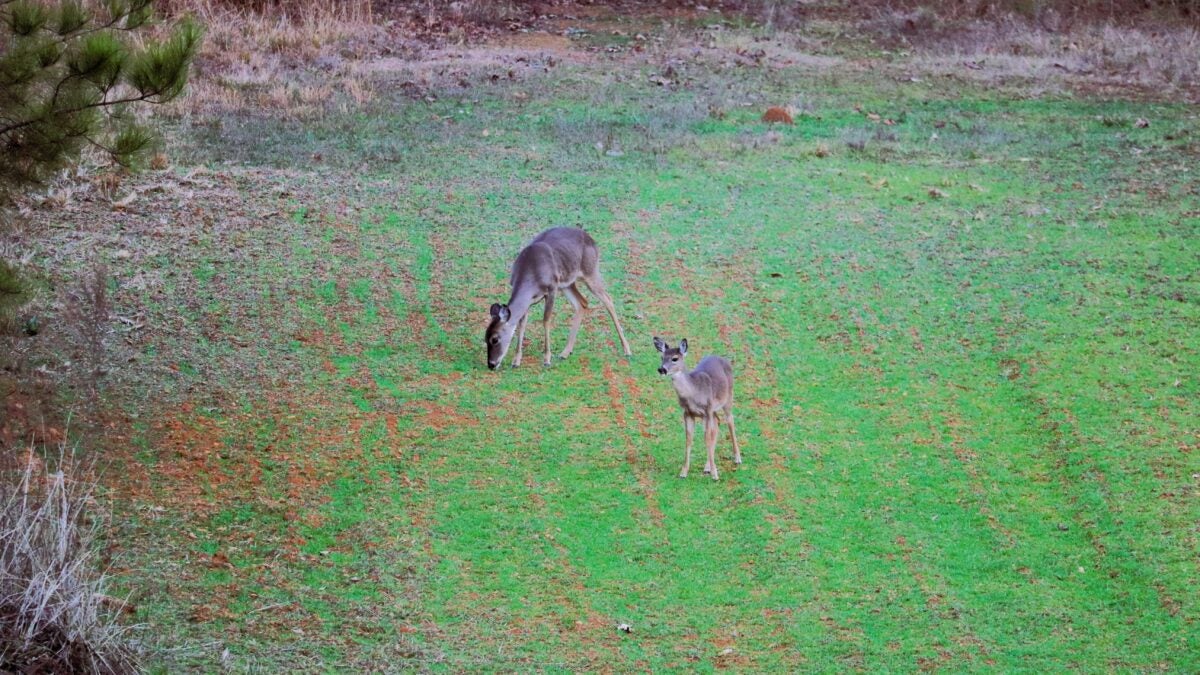

Mule Deer Diet: The Browsing Connoisseurs
Mule deer, true to their rugged nature, have a slightly different approach to dining. They’re primarily browsers, preferring to munch on leaves, twigs, and shoots from woody plants. It’s like they’re constantly pruning the landscape.
They have a particular fondness for browse plants like sagebrush, bitterbrush, and mountain mahogany. These plants might not sound appetizing to us, but to a mule deer, they’re gourmet cuisine. Their diet also includes a variety of forbs (broad-leaved plants) and some grasses, especially in spring when new growth is abundant. Interestingly, mule deer have slightly different digestive systems than whitetails, allowing them to process these tougher plants more efficiently. It’s an adaptation that serves them well in their more arid habitats.
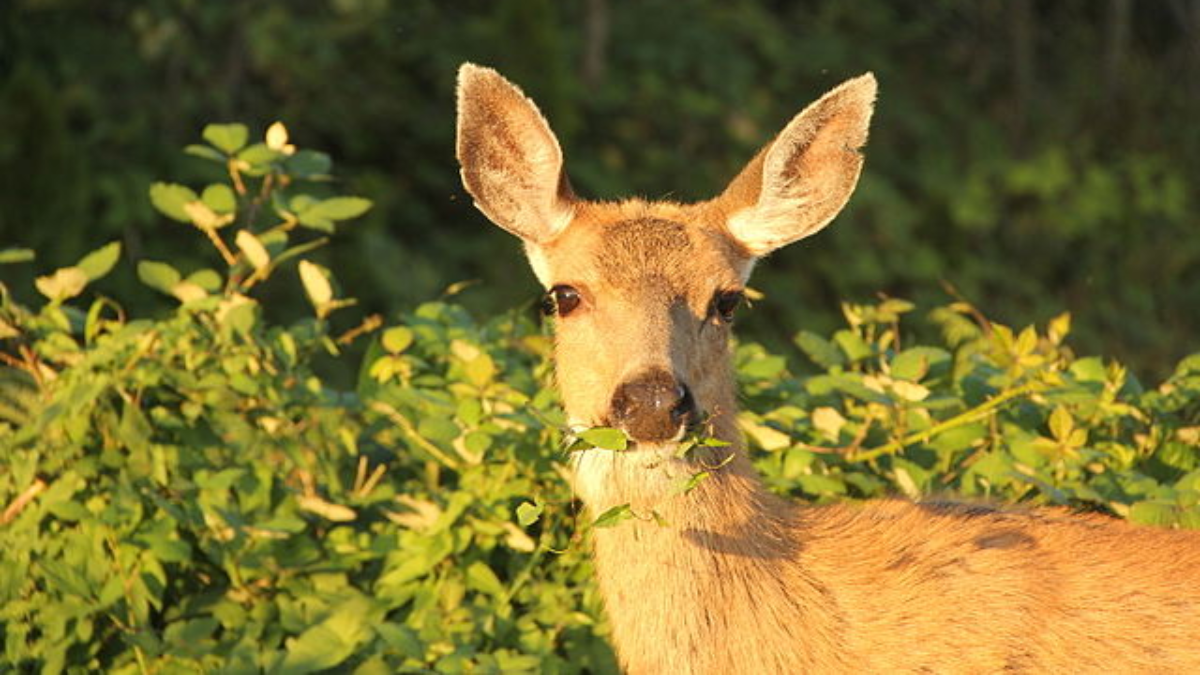

Hunting Strategies: Tips for Whitetail vs Mule Deer
For hunters, understanding the differences between whitetail and mule deer isn’t just academic – it can make or break your hunting strategy. Each species requires a different approach, and what works for one might send the other running for the hills.
Whitetail Deer Hunting: The Waiting Game
Hunting whitetails often involves a lot of sitting and waiting. It’s a test of patience, really. Tree stands and ground blinds are popular tactics. The idea is to position yourself along the deer’s travel routes and wait for them to come to you. Scent control is crucial when hunting whitetails. These guys have noses that would put a bloodhound to shame. Rattling and calling can be effective during the rut when bucks are more aggressive and territorial. And don’t forget about food plots – a well-placed food plot can be a game-changer for attracting whitetails (depending if it is legal in the state you hunt in obviously).
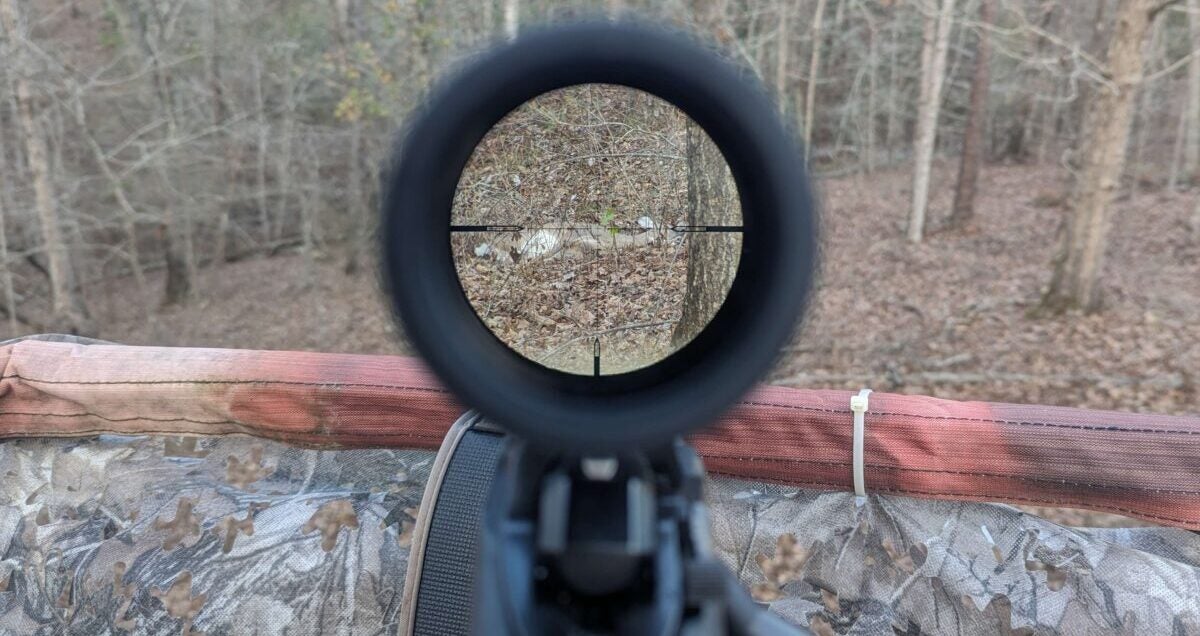

Mule Deer Hunting: The Spot-and-Stalk Challenge
Mule deer hunting? That’s a different ball game. It’s typically more active and involves a lot of glassing (using binoculars to spot deer from a distance) and stalking. The open country where mule deer live lends itself well to this style of hunting.
You’ve got to be in good shape for mule deer hunting. It often involves hiking in steep, rugged terrain. And when you do spot a deer, the real challenge begins. Those big ears aren’t just for show – mule deer have excellent hearing. You’ve got to be quieter than a mouse in church to get close to these guys. Wind direction is crucial in mule deer hunting. Always try to approach from downwind, and be mindful of thermals in mountainous areas. The wind can shift quickly, carrying your scent right to that buck you’ve been stalking for hours.
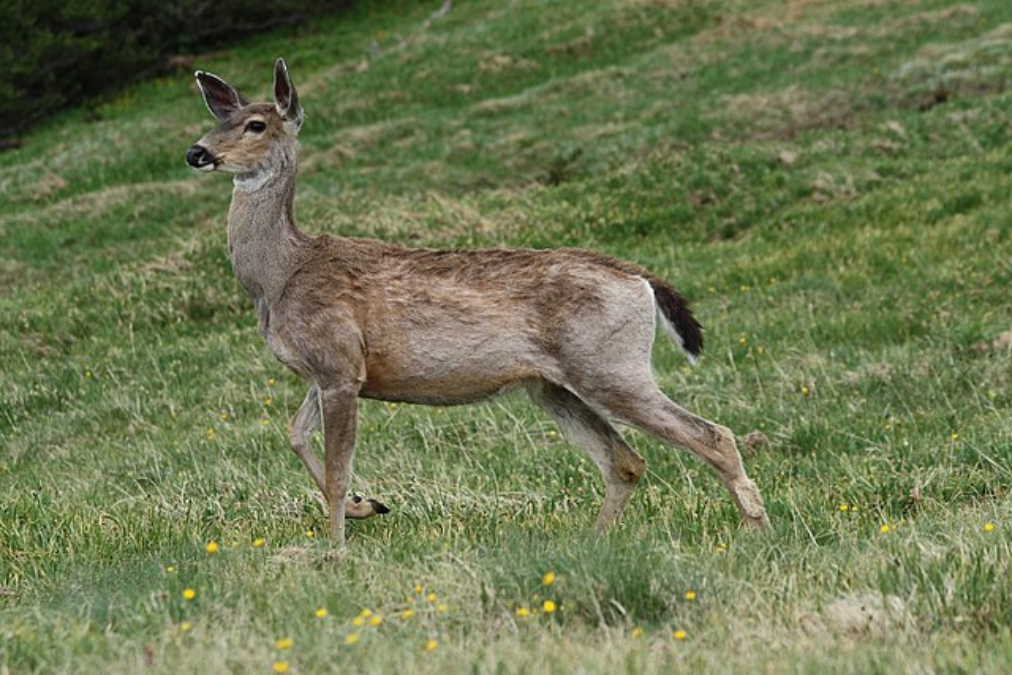

Conclusion: Mastering Whitetail vs Mule Deer Identification
So there you have it – your comprehensive guide to telling whitetails from mule deer. Next time you’re out in deer country, whether you’re hunting, hiking, or just enjoying nature, see if you can spot these differences. It’s like a real-life game of “Spot the Difference,” only with much bigger stakes (and antlers).
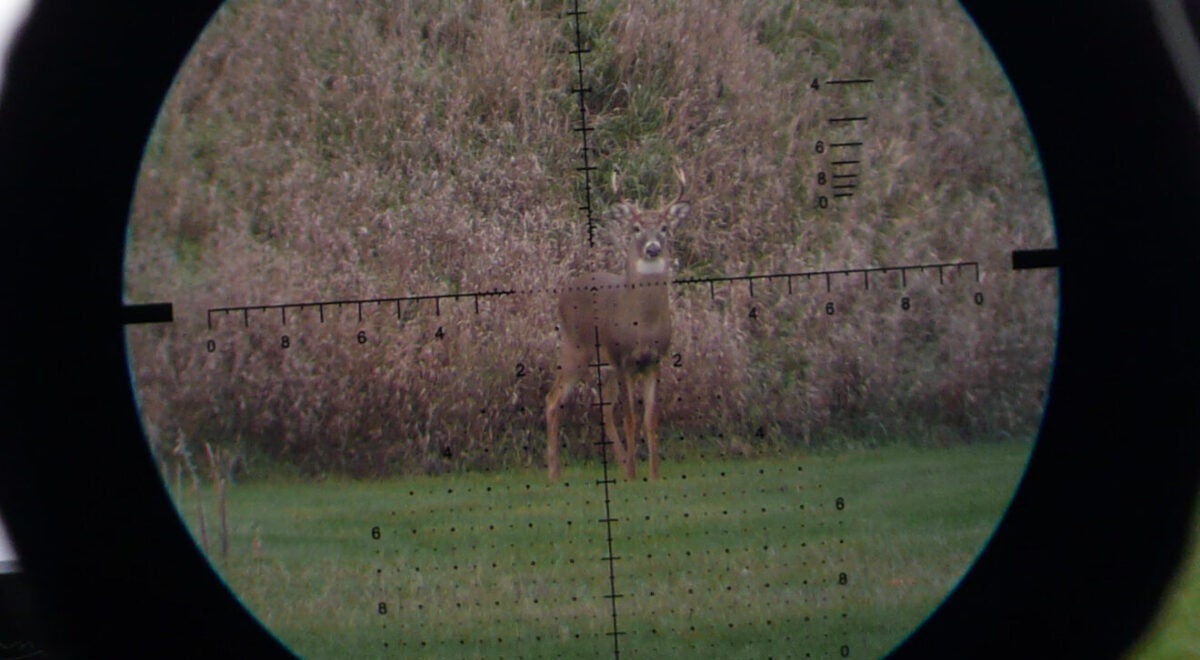

Remember, whether you’re observing or hunting, respecting these animals and their habitats is key. The more we understand about wildlife, the better we can appreciate and protect the amazing diversity in our forests, fields, and mountains. Deer season is just around the corner, and whether it’s a whitetail or a mule deer in my sights, I’ll be ready. Happy hunting, folks!
